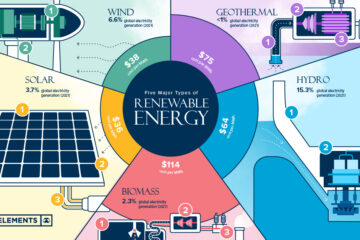Introduction to Mattress Disposal
Disposing of an old mattress might often be considered a straightforward task, but it entails complexities beyond simply discarding the item. Mattresses are substantial and composed of various materials, making them challenging for traditional waste management systems. Improper disposal can lead to these bulky items contributing to landfill congestion, exacerbating environmental issues. The silver lining, however, is the increasing availability of environmentally conscious practices, such as old mattress pickup services. These services facilitate the responsible disposal of mattresses, ensuring that individuals can part with their old mattresses in a manner that aligns with environmental sustainability goals.
In today’s environmentally aware context, merely removing a mattress is inadequate. Acting responsibly involves choosing pathways that benefit the ecosystem. Engaging with mattress recycling services emphasizes resource conservation and waste minimization.
Understanding Local Disposal Regulations
Each locality may have its rules and regulations concerning how mattresses should be disposed of, reflecting different areas’ infrastructural and environmental variations. Some municipalities might encourage designated days for bulky waste collection, while others may enforce strict prohibitions against roadside dumping. Understanding and complying with these local guidelines is not just a matter of legality but is intrinsic to upholding community standards and environmental health. Navigating these rules can be straightforward if one uses local government resources and contacts with city waste departments, which provide necessary insights into regulations and recommended disposal practices.
Consequences of Ignoring Local Guidelines
Disregarding these local requirements can invite a cascade of negative outcomes. Practically, individuals might face fines and penalties for non-compliance. Furthermore, there’s the broader impact of contributing to environmental degradation through improper disposal, which affects local ecosystems, air quality, and soil health. This can also depreciate property valuations and community aesthetics, illustrating the interlinked nature of responsible disposal and community welfare. By ensuring adherence to local disposal rules, individuals actively contribute to managing their community’s ecological and social balance, maintaining the area’s cleanliness and livability.
Eco-Friendly Disposal Options
With heightening awareness regarding environmental responsibility, an array of eco-friendly disposal options has surfaced that cut down on waste and serve broader societal benefits. Donating a mattress represents a generous disposal avenue, extending the utility of the mattress while aiding those in need. Numerous charitable organizations, homeless shelters, and transitional housing facilities eagerly welcome gently used mattresses, which can provide comfort and stability to less fortunate individuals and families. This practice highlights the dual aspect of disposal: environmental care coupled with social responsibility.
Repurposing Mattress Components
An exciting dimension of eco-friendly disposal involves creatively repurposing or upcycling mattress components. Foam can be reused in applications such as carpet underpadding or crafted into custom cushioning, while the robust springs can be fashioned into decorative centerpieces or utilized in artistic installations. This reimagining of what was once considered waste embodies an ethos of innovation and sustainability, proving that a disposed item can transition into something uniquely functional or ornamental. Upcycling invites individuals to undertake environmentally responsible actions that tap into their ingenuity, contributing positively to environmental conservation and personal satisfaction.
Research and Planning for Effective Disposal
Success in mattress disposal starts with comprehensive research and astute planning, ensuring a seamless process circumvents common pitfalls associated with bulky item disposal. This preparation involves identifying and engaging with local disposal avenues, encompassing municipal services, private entrepreneurial efforts, or organized nonprofit endeavors. Each option has advantages and operational specifics, poised to meet user needs and preferences.
Through diligent planning, the daunting task of disposing of a mattress transforms into an orderly, manageable endeavor. Strategic alignment with best practices advocated by reputable sources such as prominent environmental organizations ensures that available resources are optimized, reducing potential environmental impact while easing the individual burden. This collective effort underscores how conscientious planning transcends personal convenience, evolving into a catalyst for ecological stewardship and sustainability.
The Role of Consumer Awareness and Community Involvement
Fostering consumer awareness is a cornerstone in advancing sustainable disposal methods. By educating the public through accessible channels like workshops, community talks, and informational campaigns, communities empower their members to adopt informed and responsible practices. These initiatives elucidate disposal’s broader impacts and intersection with community health and ecological balance, encouraging residents to reconsider their roles and responsibilities as environmental stewards.
Furthermore, leveraging community involvement is pivotal in amplifying the effectiveness and reach of sustainability measures. Organized local recycling drives, collaborative clean-up events, and active support of sustainable disposal practices galvanize collective enthusiasm and action. This connectivity nurtures an ecosystem of shared responsibility, underscoring that maintaining environmental integrity is communal. By uniting under shared goals of ecological preservation and community welfare, citizens shape a conscientious and proactive narrative that fortifies bonds and enhances the livability of their neighborhoods.
Conclusion: Paving the Way for Sustainable Practices
The journey toward responsible and sustainable mattress disposal is multifaceted and requires a commitment to both individual actions and collective engagement. By internalizing the significance of local disposal regulations, exploring innovative and eco-friendly solutions, preparing meticulously, and embracing community initiatives, disposal transitions from a burdensome requisite into an opportunity for impactful regeneration. As more stakeholders participate in and advocate for these conscientious practices, communities worldwide advance toward healthier ecosystems, illustrating that proactive and informed decisions shape sustainable futures.
Keep an eye for more latest news & updates on Hint Insider!




